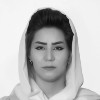Acting Minister of Public Health Wahid Majroh on Thursday said that over 50 percent of hospitalized COVID-19 patients need oxygen, as cases rise across the country.
Majroh said the domestic oxygen production firms do not have the capacity to address the needs of the country’s hospitals to provide oxygen, and Afghanistan will ask regional nations for help with the oxygen shortage.
“We are stepping up to a critical stage in Afghanistan; one of the reasons that the scale of the crisis has expanded in Afghanistan is due to the shortage of oxygen,” said Majroh.
“We pleaded for oxygen for our patient and then oxygen was provided by doctors,” said Mujtaba, a patient’s visitor.
“He had a fever and was shivering, he also had asthma and he lacked oxygen,” said Mahmoud, a patient's visitor.
Majroh said there are around seven medical oxygen-producing factories in Afghanistan which cannot address the needs of the country’s health system.
“Our countrymen are making a joke of wearing a facemask, they cite school closures to blame us, therefore Afghanistan requests neighboring countries to support Afghanistan in the delivery of oxygen,” added Majroh.
UNICEF had pledged to establish oxygen production firms at Afghanistan’s hospitals by March, but the Afghan Health Ministry says that it has failed to deliver on its promises.
Latest COVID-19 figures in Afghanistan:
The Ministry of Public Health on Thursday reported 1,509 new positive cases of COVID-19 out of 4,392 samples tested in the last 24 hours.
The ministry also reported 34 deaths and 107 recoveries from COVID-19 in the same period.
Waheed Majroh, the acting minister of public health, speaking at a press conference in Kabul on Thursday said: “We will face a disaster soon if people don't pay attention to the health advice of the Ministry of Public Health. Creating health centers and increasing beds is not the solution” to fight COVID-19.
“We are faced with a lack of oxygen,” Majroh said. “We are trying to control the situation and supply oxygen (to hospitals) in Kabul and Mazar.”
“People must wear masks. People should stay at home for two weeks, especially those who don’t need to go out for urgent work,” he added.
The new cases were reported in Kabul (557), Kandahar (69), Herat (28), Balkh (172), Nangarhar (82), Takhar (154), Kunduz (123), Faryab (30), Paktia (21), Maidan Wardak (55), Badakhshan (36), Kapisa (43), Laghman (6), Bamiyan (7), Ghazni (34), Zabul (14), Ghor (4), Uruzgan (3), Farah (18), Khost (2), Paktika (17) and Nuristan (2) provinces.
Deaths were reported in Kabul (12), Herat (1), Balkh (6), Kandahar (2), Nangarhar (1), Takhar (1), Kunduz (2), Baghlan (1), Paktia (1), Maidan Wardak (1), Badakhshan (1), Laghman (1), Logar (2) and Khost (2) provinces.
The ministry reported that the cumulative total of known COVID-19 cases is 76,653, the total number of reported deaths is 3,068, and the total number of recoveries is 58,070.
So far, 485,013 samples have been tested in government centers and there are 15,414 known active COVID-19 cases in the country, data by the ministry indicates.
According to Johns Hopkins University, the number of deaths from COVID-19 globally is more than 3,692,586 and the number of known global coronavirus cases is 171,711,450.


